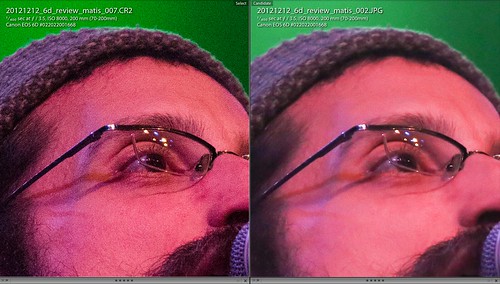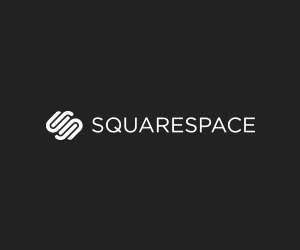Canon 6D Review
The Canon 6D is the PERFECT camera except for one fatal flaw. If you can live with this fatal flaw than this could be the camera for you. Before I get into what this flaw is lets take a deeper look at the camera and its functions as well as how it performend in real world shooting situations.
As many of you know I like to do real world shooting tests when I am reviewing gear. This means no shooting charts or over analyzing unimportant features. This also means I post the FULL RES exported files for you to review and make your own decisions on image quality. Be sure to watch the video above as I cover certain topics that I may not cover below in the written review.
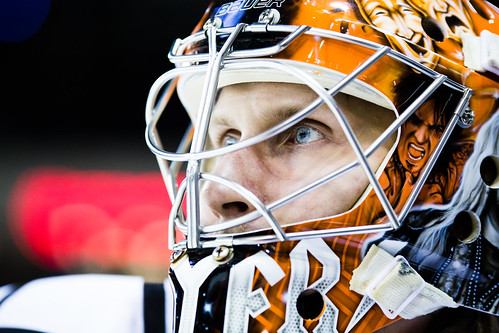
Lets now take a look at the camera itself, how it feels. This camera feels great in the hands when you are shooting horizontically. I say that because any time you try and shoot vertical without a grip any camera will feel awkward. The rubber coating on the body makes it feel like you wont drop it and the build quality seems to feel very sturdy. As far as how it feels when your shooting, it feels just fine and people with small or large hands shouldn’t have much of a problem handling this body. People with much larger hands should consider picking up the battery grip for added confort.
Button Layout
This is the first Canon camera that I have used that just made sense in terms of the button locations and layout. The buttons across the top of the camera are clearly marked, easy to find and just make sense. The buttons, dials, joysticks and spinning wheels all are easy to locate and use. I was a huge fan of the up up down down left right left right button inside the wheel on the back of the camera. This made it very easy to cycle through the 11 focus points this camera offers.
The live view switch is clearly marked and there is no mistaking which mode you are in. When you are in video mode you start recording video by pressing in on the record button inside that dial. It just made sense, the only thing you need to remember to do is press it to start recording. At the hockey game I watched a great fight in the LCD to only realize I never hit the record button, very upsetting that I missed that. That was human erro, not the cameras fault and something you learn from for the future.
I felt that I should mention in this section that this camera only offers one SD card where as the Nikon D600 offers two. I like the option of having two cards in my camera, mostly for redundancy. I like when I take an image and it writes to both cards. This is not a deal breaker just something that would have been nice to have.
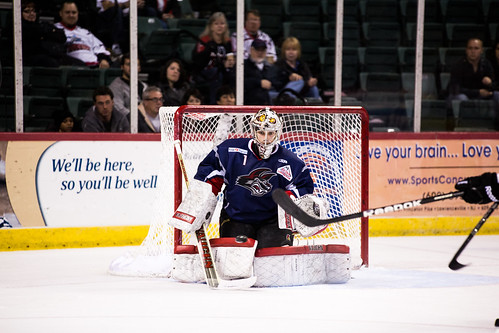
Menu
What a fantastically simple and functional menu layout. This just made sense, use the joystick and the spinning dial to move from tab to tab. This may be even easier than the Nikon cameras and I find their menus to be very easy after all of these years.
Now lets get into what most people really care about, how does this camera work in real world shooting situations. I decided to take this camera again to a sporting event and to a concert. Lets look at ice hockey first which is one of the more demanding sports to photograph. Hockey challenges the cameras auto focus system to be quick and accurate. The cameras meter doesn’t really need to work at all once you lock in your exposure as the light is very even in the rink.
Being that I do not own and Canon glass I borrowed a Sigma 70-200 2.8 OS from AllensCamera.com for the review. Once I had my ISO and exposure locked in I focused on (no pun intended) capturing the action of the game.
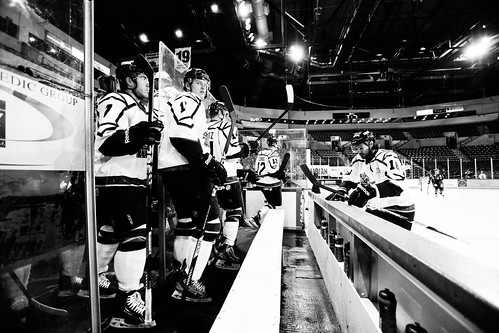
Autofocus
The autofocus of this camera has always been the question mark in peoples minds. When Canon announced it and said it only had one cross type sensor in the middle it left people perplexed. Now that I had the camera in my hands to test out in a real world action situation I can tell you this is it’s major flaw. In AI Servo which is Canon’s continuos focus you are faced with where to put the focus point. There are 11 focus points that do cover a large portion of the viewfinder unlink the Nikon D600.
The issue is you pretty much have to leave the focus point in the middle when shooting continuos focus. The camera has trouble when you put the focus points anywhere but in the middle. This leads to a few issues when shooting. I like to focus on the eyes or the face depending on what I am shooting. I found that while shooting hockey and only being able to select between 11 points and nothing in between it made it hard to put the focus point where I wanted it. With other cameras such as the D600 you have the ability to select between 39 different points.
In AI Servo the focus will start with the center point and if a subject moves to any of the other points it will continue track the subject. The problem is there are only 11 points and one of them in the middle is cross type. On the flip side the 5D Mark III has 61 focus points with 41 of them being cross type. So now you can see why I call the auto focus the fatal flaw of this camera.
Please do not get me wrong, I am not being overly harsh on the autofocus, I am simply pointing out the fact that its lacking majorly. If there was a better auto focus system this camera would be even more killer.
I took this camera into a low light situation of a Matisyahu concert and again the 11 focus points for autofocus really let me down. It is very hard to work with just 11 and try to get a proper composition. On top of composition the camera does not focus very well in low light which makes it pretty difficult to get the shots you want.

Single Focus
You do have the ability to move over to single focus which is perfect for portraits and non moving subjects. There is not much to stay here other than I wish I had the ability to select between more than 11 focus points. This slows you down when you are trying to get the shot you want. When you have to move the point to one of the 11 than lock your focus and recompose.
ISO
Everyone always want to know how the ISO is, is it clean at 1,000,000 not that this camera goes that high. The simple answer is yes, this cameras ISO handling is fantastic. I shot the hockey game around 4,000 ISO and at the concert anywhere from 2500 to 10,000 ISO. The files retain a lot of color and clarity with what I would call a film grain look to the RAW files. The reason I say to the RAW files there is because of the Hi-ISO noise reduction that gets added to the JPEG files. I shot both RAW and JPEG Fine being that at the time of first testing this camera there was no RAW update to Adobe Lightroom.
When I was editing the files I noticed how mushy and smooth the JPEG’s looked. They looked this way because of what the camera was doing with the noise reduction. The settings in the camera do not effect the RAW file but they are baked into the JPEG. The files had this smooth unrealistic look to them which to away from the sharpness. When I put the same files next to each other in lightroom you could see a major difference. I am perfectly fine with seeing grain in my files, I rather have a sharp image than a smooth skinned looking file.
You can see in the side by side comparison at 1:1 exactly what I am talking about. The RAW file on the left does have a grainy look but its also sharp. The JPEG on the right looks smooth and not sharp. I think to many people these days zoom in on their images and expect not to see anything and if they do they are all up in arms thinking the file is terrible. I personally dont use any of the noise reduction options that are out there. I love the look of the subtle grain as I feel thats how an image is supposed to look.
Let me just say this about the ISO capability of this camera, its AMAZING. I think it is on par with the the quality of the Nikon D600 with the added bonus of having a higher ISO limit.
RAW FILES
I chose to shoot the highest quality RAW files that the camera allowed me to. After bringing them into Adobe Lightroom they seemed to just pop off the screen. These files allowed me to get amazingly thick contrast while keeping shadow and highlight detail where I needed them.
The files average out to roughly 25 megs each. You are going want to make sure you have no less than a 16 gig card in the camera possibly 32 or 64. This is the part where I wish I had two SD slots in the camera. One for stills and one for video as video is going to chew up a TON of space, more on that below.
Video
Now its time to jump into the video capability of this camera. Hands down what can I say other than its spectacular. I made sure to leave my camera set to ALL-I so I got the most data in my video files. This camera offers you 1080 at 24, 25 and 30 FPS as well as 720 at 60FPS. You can see examples of this in the video review.
This camera not only is built to capture really great stills but it is a viable pro video camera. Put good glass on this bad boy and you are going to get some really clean footage. Even at higher ISO’s the video footage held up beyond my expectations.
I am not an expert in all things video so I can not dive to deep into the nuances of the files. But I can tell you how easy it was to operate and capture video and the results speak for themselves. There is no doubt in my mind that the video in this camera is better than the Nikon D600.
GPS and WIFI
To be honest I kept both of this functions turned off as this was not something I needed or wanted to use in my daily shooting. Sure the GPS built in is cool for tagging your files as you shoot them but its not perfect. If you are shooting indoors you might as well turn it off because you wont pick up a satellite. If you are shooting in one general location turn the gps on take one picture when it connects than sync that data later in Lightroom.
Here are my thoughts on wifi, I really dont have any.
There is an issue though, because this camera has WIFI and GPS built in it does not have a pop up flash. That’s right, where the flash normally would be you will find the gps and wifi units. Having a simple pop up flash is well worth it in those situations where you need to quickly put some light on the subject.
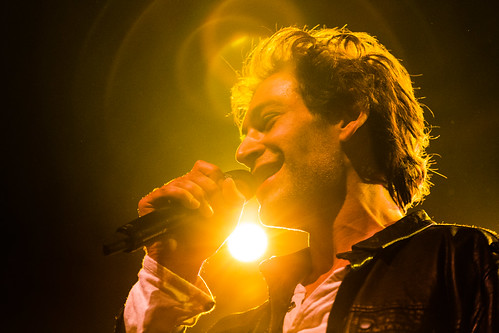
Canon 6D or NIkon D600?
I am going to make a side by side comparison video of these two cameras and point out the pros and the cons. What I can say is if you are trying to decide between the Nikon or Canon as your first Full Frame DSLR you will have to look at how the camera will be used. If you are a video shooter than the answer is simple, go with the Canon. But if you are considering doing a mix of both stills and video it becomes a much harder decision, possibly even a toss up.
My honest opinion is you cant really go wrong with either camera. There are pros and cons to both but I am not sure that one con or pro does not tilt the answer in one direction or the other. I find that these cameras are pretty even in many aspects that I find important.
Canon would have better video but the Nikon video is not terrible. After going back to look at the Nikon D600 Video I bet you would be hard pressed to be able to tell the difference between the two. Both cameras handle very well in low light situations with the Canon allowing you to push the ISO a little further. It may sound like I am pushing you towards the Canon but it does have that one fatal flaw and that is the auto focus or lack there of, but we discussed that above. The D600 feels like it has better autofocus in the situations that I put it in. But if you are more of a single servo shooter than either direction you go you will be happy with.
I can not reiterate enough how important good glass is on any camera especially full frame sensors. I don’t care if you can raise your ISO to the stars, that does not make up for crappy glass. The same holds true for image stabilization. Just because you have IS that does not mean you can use crappy lenses and higher ISO’s to get the picture.
In conclusion
This camera really kicked ass in so many situations from amazing RAW files, great build quality, great menu and button layout, great video and much much more. But the stinking autofocus system is its fatal flaw. It is very hard to rely on the one cross type focus point when in AI Servo aka continuos focus. All Canon had to do here was give me more focus point. I know they have to worry about over stepping on the 5D MK III which has 61 points 41 of which are cross type. My suggestion would have been put in 39 points with 20 something cross types and call it a day.
In the end I enjoyed what the functionality and quality of this camera. I am very happy with the results of the stills and video alike. You have to keep in mind this is not a top of the line camera, its pretty much like a full frame rebel and you have to review it as such.
If you are jumping into your first full frame camera you really can not go wrong with this camera. I think the positives outweigh the few negatives but it comes down to what you will be using the camera for. If your shooting just video than the autofocus has no bearing on you. If you shoot a lot of action than this is something to consider. If you have a few extra bucks to spend on the 5D Mark III than I would say go with that camera over the 6D. Don’t forget what I always say, GLASS GLASS GLASS GLASS before bodies. If you can afford the 6D and solid glass but not the 5D MK III than go with the 6D.
I hope you found this review helpful, if you would like to pick up a 6D or any other Canon gear please support my first and most loyal sponsor, AllensCamera.com


